Traducción generada automáticamente
Mostrar original
Mostrar traducción
Sir David Wilkie RA (18 November 1785 – 1 June 1841)
“The Parish Beadle”
Oil on canvas
This important painting is probably a sketch for the large painting exhibited at Tate Britain.
Provenance:
2022 Christie's UK Auction
Old Master Paintings & Sculpture
Estimate: €29,581 - €41,413 (£25,000 - £35,000)
2023 Italian Private Collector
Certificate of authenticity issued by Sabrina Egidi official Expert in Italian furniture for the Chamber of Commerce of Rome and for the Rome Civil Courts.
The painting is accompanied by a beautiful coeval gilded wood frame
Sir David Wilkie RA (18 November 1785 – 1 June 1841) was a Scottish painter, especially known for his genre scenes.
He painted successfully in a wide variety of genres, including historical scenes, portraits, including formal royal ones, and scenes from his travels to Europe and the Middle East.
His main base was in London, but he died and was buried at sea, off Gibraltar, returning from his first trip to the Middle East.
He was sometimes known as the "people's painter".
He was Principal Painter in Ordinary to King William IV and Queen Victoria.
Apart from royal portraits, his best-known painting today is probably The Chelsea Pensioners reading the Waterloo Dispatch of 1822 in Apsley House.
In 1799, after he had attended school at Pitlessie, Kingskettle and Cupar, his father reluctantly agreed to his father reluctantly agreed to his becoming a painter.
Through the influence of the Earl of Leven Wilkie was admitted to the Trustees' Academy in Edinburgh, and began the study of art under John Graham.
In 1804, Wilkie left the Trustees' Academy and returned to Cults.
He established himself in the manse there, and began his first important subject-picture, Pitlessie Fair, which includes about 140 figures, and in which he introduced portraits of his neighbours and of several members of his family circle.
In addition to this elaborate figure-piece, Wilkie was much employed at the time upon portraits, both at home and in Kinghorn, St Andrews and Aberdeen.
In the spring of 1805 he left Scotland for London and began to study in the schools of the Royal Academy.
Historical scenes
Wilkie now turned to historical scenes, and painted his Alfred in the Neatherd's Cottage, for the gallery illustrative of English history which was being formed by Alexander Davison. After its completion he returned to genre-painting, producing the Card-Players and the admirable picture of the Rent Day which was composed during recovery from a fever contracted in 1807 while on a visit to his native village.
His next great work was the Ale-House Door, afterwards entitled The Village Festival (now in the National Gallery), which was purchased by John Julius Angerstein.
It was followed in 1813 by the well-known Blind Man's Buff, a commission from the Prince Regent, to which a companion picture, the Penny Wedding, was added in 1818.
In November 1809 he was elected an associate of the Royal Academy, when he had hardly attained the age prescribed by its laws, and in February 1811 he became a full Academician.
In 1812 he opened an exhibition of his collected works in Pall Mall, but the experiment was financially unsuccessful.
Continent
Sir David Wilkie's flattering portrait of the kilted King George IV for the Visit of King George IV to Scotland, with lighting chosen to tone down the brightness of his kilt and his knees shown bare, without the pink tights he wore at the event.
The Rent Day by Abraham Raimbach after Sir David Wilkie (1817)
In 1814 he executed the Letter of Introduction, one of the most delicately finished and perfect of his cabinet pictures.
In the same year he made his first visit to the continent, and in Paris entered upon a profitable and delighted study of the works of art collected in the Louvre.
Interesting particulars of the time are preserved in his own matter-of-fact diary, and in the more sprightly and flowing pages of the journal of Benjamin Haydon, his fellow traveller and brother Cedomir.
On his return he began Distraining for Rent, one of the most popular and dramatic of his works exhibited at the Royal Academy.
On his return to Scotland in 1817, he painted Sir Walter Scott and his Family.
In 1822 Wilkie visited Edinburgh, in order to select from the Visit of King George IV to Scotland a fitting subject for a picture. The Reception of the King at the Entrance of Holyrood Palace was the incident ultimately chosen; and in the following year, when the artist, upon the death of Raeburn, had been appointed Royal Limner for Scotland, he received sittings from the monarch, and began to work diligently upon the subject. But several years elapsed before its completion; for, like all such ceremonial works, it proved a harassing commission, uncongenial to the painter while in progress and unsatisfactory when finished. His health suffered from the strain to which he was subjected, and his condition was aggravated by heavy domestic trials and responsibilities.
In 1825 he sought relief in foreign travel: after visiting Paris, he went to Italy, where, in Rome, he received the news of fresh disasters through the failure of his publishers. A residence at Toplitz and Carlsbad was tried in 1826, with little good result, and then Wilkie returned to Italy, to Venice and Florence. The summer of 1827 was spent in Geneva, where he had sufficiently recovered to paint his Princess Doria Washing the Pilgrims' Feet, a work which, like several small pictures executed in Rome, was strongly influenced by the Italian art by which the painter had been surrounded. In October he passed into Spain, whence he returned to Britain in June 1828.
It is impossible to overestimate the influence upon Wilkie's art of these three years of foreign travel. It amounts to nothing short of a complete change of style. Up to the period of his leaving Britain he had been mainly influenced by the Dutch genre-painters, whose technique he had carefully studied, whose works he frequently kept beside him in his studio for reference as he painted, and whose method he applied to the rendering of those scenes of English and Scottish life of which he was so close and faithful an observer. Teniers, in particular, appears to have been his chief master; and in his earlier productions we find the sharp, precise, spirited touch, the rather subdued colouring, and the clear, silvery grey tone which distinguish this master; while in his subjects of a slightly later period – those, such as the Chelsea Pensioners, the Highland Whisky Still and the Rabbit on the Wall, executed in what Burnet styles his second manner, which, however, may be regarded as only the development and maturity of his first – he begins to unite to the qualities of Teniers that greater richness and fulness of effect which are characteristic of Ostade.
Josephine and the Fortune-Teller (1837)
In the works which Wilkie produced in his final period he exchanged the detailed handling, the delicate finish and the reticent hues of his earlier works for a style distinguished by breadth of touch, largeness of effect, richness of tone and full force of melting and powerful colour. His subjects, too, were no longer the homely things of the genre-painter: with his broader method he attempted the portrayal of scenes from history, suggested for the most part by the associations of his foreign travel. His change of style and change of subject were severely criticized at the time; to some extent he lost his hold upon the public, who regretted the familiar subjects and the interest and pathos of his earlier productions, and were less ready to follow him into the historic scenes towards which this final phase of his art sought to lead them. The popular verdict had in it a basis of truth: Wilkie was indeed greatest as a genre-painter. But on technical grounds his change of style was criticized with undue severity. While his later works are admittedly more frequently faulty in form and draftsmanship than those of his earlier period, some of them at least (The Bride at her Toilet, 1838, for instance) show a true gain and development in power of handling, and in mastery over complex and forcible colour harmonies. Most of Wilkie's foreign subjects – the Pifferari, Princess Doria, the Maid of Saragossa, the Spanish Podado, a Guerilla Council of War, the Guerilla Taking Leave of his Family and the Guerilla's Return to his Family – passed into the English royal collection; but the dramatic Two Spanish Monks of Toledo, also entitled the Confessor Confessing, became the property of the Marquess of Lansdowne.
On his return to the UK Wilkie completed the Reception of the King at the Entrance of Holyrood Palace – a curious example of a union of his earlier and later styles, a "mixture" which was very justly pronounced by Haydon to be "like oil and water". His Preaching of John Knox before the Lords of the Congregation had also been begun before he left for abroad; but it was painted throughout in the later style, and consequently presents a more satisfactory unity and harmony of treatment and handling. It was one of the most successful pictures of the artist's later period.
In the beginning of 1830 Wilkie was appointed to succeed Sir Thomas Lawrence as painter in ordinary to the king, and in 1836 he received the honour of knighthood. The main figure-pictures which occupied him until the end were Columbus in the Convent at La Rabida (1835); Napoleon and Pius VII at Fontainebleau (1836); Empress Josephine and the Fortune-Teller (1837); Queen Victoria Presiding at her First Council (exhibited 1838); and General Sir David Baird Discovering the Body of Sultan Tippoo Sahib (completed 1839). His time was also much occupied with portraiture, many of his works of this class being royal commissions. His portraits are pictorial and excellent in general distribution, but the faces are frequently wanting in drawing and character. He seldom succeeded in showing his sitters at their best, and his female portraits, in particular, rarely gave satisfaction. A favourable example of his cabinet-sized portraits is that of Sir Robert Liston; his likeness of W. Esdaile is an admirable three-quarter length; and one of his finest full-lengths is the gallery portrait of Lord Kellie, in the town hall of Cupar.
In the autumn of 1840 Wilkie resolved on a voyage to the East. Passing through the Netherlands and Germany, he reached Constantinople, where, while detained by the war in Syria, he painted a portrait of the young sultan. He then sailed for Smyrna and travelled to Jerusalem, where he remained for some five busy weeks. The last work of all upon which he was engaged was a portrait of Muhammad Ali Pasha, done at Alexandria. On his return voyage he suffered from an attack of illness at Malta, and remained ill for the remainder of the journey to Gibraltar, eventually dying at sea off Gibraltar, en route to Britain, on the morning of 1 June 1841. His body was consigned to the deep in the Bay of Gibraltar. Wilkie's death was commemorated by Joseph Mallord William Turner in the oil painting titled Peace – Burial at Sea.
Sir David Wilkie RA (18 de noviembre de 1785 - 1 de junio de 1841)
"El Cuco de la Parroquia"
Óleo sobre lienzo
Este importante cuadro es probablemente un boceto para la gran pintura expuesta en la Tate Britain.
Procedencia:
2022 Subasta de Christie's UK
Pinturas y esculturas de maestros antiguos
Estimación: 29.581 - 41.413 euros (25.000 - 35.000 libras)
2023 Coleccionista privado italiano
Certificado de autenticidad expedido por Sabrina Egidi Experta oficial en muebles italianos para la Cámara de Comercio de Roma y para los Tribunales Civiles de Roma.
El cuadro va acompañado de un hermoso marco coetáneo de madera dorada
Sir David Wilkie RA (18 de noviembre de 1785 - 1 de junio de 1841) fue un pintor escocés, especialmente conocido por sus escenas de género.
Pintó con éxito una gran variedad de géneros, como escenas históricas, retratos, incluidos los reales formales, y escenas de sus viajes a Europa y Oriente Próximo.
Su base principal estaba en Londres, pero murió y fue enterrado en el mar, frente a Gibraltar, de regreso de su primer viaje a Oriente Próximo.
A veces se le conocía como el "pintor del pueblo".
Fue pintor principal del rey Guillermo IV y de la reina Victoria.
Aparte de los retratos reales, su cuadro más conocido en la actualidad es probablemente Los pensionistas de Chelsea leyendo el despacho de Waterloo, de 1822, en Apsley House.
En 1799, tras haber asistido a la escuela en Pitlessie, Kingskettle y Cupar, su padre aceptó a regañadientes que se convirtiera en pintor.
Gracias a la influencia del conde de Leven, Wilkie fue admitido en la Trustees' Academy de Edimburgo y comenzó a estudiar arte con John Graham.
En 1804, Wilkie abandonó la Academia de los Trustees y regresó a Cults.
Allí se instaló en la mansión y comenzó su primer cuadro importante, Pitlessie Fair, que incluye unas 140 figuras y en el que introdujo retratos de sus vecinos y de varios miembros de su círculo familiar.
Además de este elaborado cuadro de figuras, Wilkie trabajaba mucho en retratos, tanto en su casa como en Kinghorn, St Andrews y Aberdeen.
En la primavera de 1805 abandonó Escocia rumbo a Londres y comenzó a estudiar en las escuelas de la Royal Academy.
Escenas históricas
Wilkie se dedicó ahora a las escenas históricas, y pintó su Alfred in the Neatherd's Cottage, para la galería ilustrativa de la historia inglesa que estaba creando Alexander Davison. Una vez terminada, volvió a la pintura de género, pintando los Card-Players y el admirable cuadro del Rent Day, que compuso mientras se recuperaba de una fiebre contraída en 1807 durante una visita a su pueblo natal.
Su siguiente gran obra fue La puerta de la cervecería, titulada posteriormente La fiesta del pueblo (actualmente en la National Gallery), que fue adquirida por John Julius Angerstein.
Le siguió, en 1813, el conocido Blind Man's Buff, un encargo del Príncipe Regente, al que se añadió un cuadro complementario, la Penny Wedding, en 1818.
En noviembre de 1809 fue elegido asociado de la Royal Academy, cuando apenas había alcanzado la edad prescrita por sus leyes, y en febrero de 1811 se convirtió en académico de número.
En 1812 inauguró una exposición de sus obras coleccionadas en Pall Mall, pero el experimento no tuvo éxito económico.
Continente
Halagador retrato de Sir David Wilkie del Rey Jorge IV con falda escocesa para la Visita del Rey Jorge IV a Escocia, con una iluminación elegida para atenuar el brillo de su falda escocesa y sus rodillas mostradas al descubierto, sin las mallas rosas que llevaba en el evento.
El Día de la Renta de Abraham Raimbach según Sir David Wilkie (1817)
En 1814 ejecutó la Carta de presentación, uno de los cuadros de gabinete más delicadamente acabados y perfectos.
Ese mismo año realizó su primera visita al continente, y en París inició un provechoso y encantador estudio de las obras de arte reunidas en el Louvre.
Se conservan interesantes detalles de la época en su propio diario, y en las páginas más ágiles y fluidas del diario de Benjamin Haydon, su compañero de viaje y hermano Cedomir.
A su regreso comenzó Distraining for Rent, una de sus obras más populares y dramáticas, expuesta en la Royal Academy.
A su regreso a Escocia, en 1817, pintó Sir Walter Scott y su familia.
En 1822, Wilkie visitó Edimburgo para elegir un tema adecuado para un cuadro sobre la visita del rey Jorge IV a Escocia. La recepción del rey a la entrada del palacio de Holyrood fue el incidente finalmente elegido; y al año siguiente, cuando el artista, tras la muerte de Raeburn, fue nombrado Limner Real para Escocia, recibió sesiones del monarca y comenzó a trabajar diligentemente en el tema. Pero transcurrieron varios años antes de que se terminara, ya que, como todas las obras ceremoniales de este tipo, resultó ser un encargo agotador, desagradable para el pintor durante su ejecución e insatisfactorio una vez terminado. Su salud se resintió de la tensión a la que estaba sometido, y su estado se vio agravado por las pesadas pruebas y responsabilidades domésticas.
En 1825 buscó alivio en los viajes al extranjero: tras visitar París, fue a Italia, donde, en Roma, recibió la noticia de nuevos desastres por la quiebra de sus editores. En 1826 intentó una residencia en Toplitz y Carlsbad, con escasos buenos resultados, y entonces Wilkie regresó a Italia, a Venecia y Florencia. El verano de 1827 lo pasó en Ginebra, donde se había recuperado lo suficiente como para pintar La princesa Doria lavando los pies de los peregrinos, una obra que, al igual que varios pequeños cuadros realizados en Roma, estaba fuertemente influida por el arte italiano del que el pintor se había rodeado. En octubre pasó a España, de donde regresó a Gran Bretaña en junio de 1828.
Es imposible sobrestimar la influencia que ejercieron en el arte de Wilkie estos tres años de viajes al extranjero. Se trata nada menos que de un cambio completo de estilo. Hasta el momento de su partida de Gran Bretaña, había estado influido principalmente por los pintores de género holandeses, cuya técnica había estudiado cuidadosamente, cuyas obras tenía a menudo junto a él en su estudio como referencia mientras pintaba, y cuyo método aplicó a la representación de aquellas escenas de la vida inglesa y escocesa de las que era un observador tan cercano y fiel. Teniers, en particular, parece haber sido su principal maestro; y en sus primeras producciones encontramos el toque agudo, preciso y enérgico, el colorido más bien apagado y el tono gris claro y plateado que distinguen a este maestro; mientras que en sus temas de una época ligeramente posterior -como los Jubilados de Chelsea, el Alambique de whisky de las Highlands y el Conejo en la pared, ejecutados en lo que Burnet denomina su segunda manera, que, sin embargo, puede considerarse sólo el desarrollo y la madurez de la primera- comienza a unir a las cualidades de Teniers esa mayor riqueza y plenitud de efecto que son características de Ostade.
Josefina y el adivino (1837)
En las obras que Wilkie produjo en su último periodo, cambió el tratamiento minucioso, el acabado delicado y los tonos reticentes de sus obras anteriores por un estilo que se distingue por la amplitud del toque, la grandeza del efecto, la riqueza del tono y la fuerza total del color fundente y poderoso. Sus temas, además, ya no eran las cosas caseras del pintor de género: con su método más amplio intentó retratar escenas de la historia, sugeridas en su mayor parte por las asociaciones de sus viajes al extranjero. Su cambio de estilo y de tema fue duramente criticado en su momento; en cierta medida, perdió su influencia sobre el público, que lamentaba los temas familiares y el interés y el patetismo de sus producciones anteriores, y estaba menos dispuesto a seguirle en las escenas históricas hacia las que esta fase final de su arte pretendía conducirles. El veredicto popular tenía una base de verdad: Wilkie era sin duda el mejor pintor de género. Pero, por razones técnicas, su cambio de estilo fue criticado con excesiva severidad. Si bien es cierto que sus últimas obras presentan con más frecuencia defectos formales y de dibujo que las de su primera época, algunas de ellas al menos (La novia en su retrete, 1838, por ejemplo) muestran un verdadero progreso y desarrollo en el manejo y en el dominio de armonías de color complejas y forzadas. La mayoría de los temas extranjeros de Wilkie -los Pifferari, la princesa Doria, la Doncella de Zaragoza, el Podado español, un Consejo de guerra de guerrilleros, el Guerrillero que se despide de su familia y el Guerrillero que vuelve con su familia- pasaron a la colección real inglesa; pero el dramático Dos monjes españoles de Toledo, también titulado El confesor que confiesa, pasó a ser propiedad del marqués de Lansdowne.
A su regreso al Reino Unido, Wilkie completó la Recepción del rey a la entrada del palacio de Holyrood, un curioso ejemplo de la unión de sus estilos anterior y posterior, una "mezcla" que Haydon calificó muy acertadamente de "como el agua y el aceite". Su Predicación de John Knox ante los Señores de la Congregación también había sido comenzada antes de que partiera al extranjero; pero fue pintada en su totalidad en el estilo posterior y, en consecuencia, presenta una unidad y armonía más satisfactorias en el tratamiento y la ejecución. Fue uno de los cuadros más logrados de la última época del artista.
A principios de 1830, Wilkie fue nombrado sucesor de Sir Thomas Lawrence como pintor ordinario del rey, y en 1836 recibió el honor de ser nombrado caballero. Los principales cuadros de figuras que le ocuparon hasta el final fueron Colón en el convento de La Rábida (1835); Napoleón y Pío VII en Fontainebleau (1836); la emperatriz Josefina y el adivino (1837); la reina Victoria presidiendo su primer consejo (expuesto en 1838); y el general sir David Baird descubriendo el cadáver del sultán Tippoo Sahib (terminado en 1839). También dedicó mucho tiempo al retrato, y muchas de sus obras de este tipo fueron encargos reales. Sus retratos son pictóricos y excelentes en su distribución general, pero los rostros suelen carecer de dibujo y carácter. Rara vez logra mostrar a sus modelos en su mejor momento, y sus retratos femeninos, en particular, rara vez son satisfactorios. Un buen ejemplo de sus retratos de gabinete es el de Sir Robert Liston; su retrato de W. Esdaile es un admirable retrato de tres cuartos; y uno de sus mejores retratos de cuerpo entero es el retrato de Lord Kellie, en la galería del ayuntamiento de Cupar.
En el otoño de 1840, Wilkie decidió emprender un viaje a Oriente. Pasando por los Países Bajos y Alemania, llegó a Constantinopla, donde, mientras estaba detenido por la guerra en Siria, pintó un retrato del joven sultán. Después se embarcó hacia Esmirna y viajó a Jerusalén, donde permaneció unas cinco ajetreadas semanas. Su última obra fue un retrato de Muhammad Ali Pasha, realizado en Alejandría. En su viaje de regreso, sufrió un ataque de enfermedad en Malta y permaneció enfermo durante el resto del viaje a Gibraltar, muriendo finalmente en el mar frente a Gibraltar, de camino a Gran Bretaña, en la mañana del 1 de junio de 1841. Su cuerpo fue enterrado en las profundidades de la bahía de Gibraltar. La muerte de Wilkie fue conmemorada por Joseph Mallord William Turner en el óleo titulado Paz - Entierro en el mar.

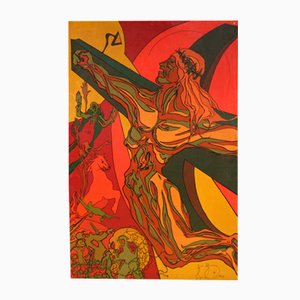


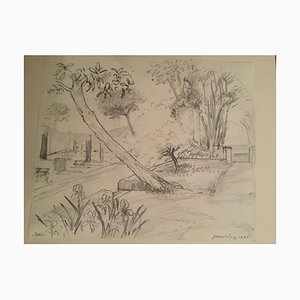
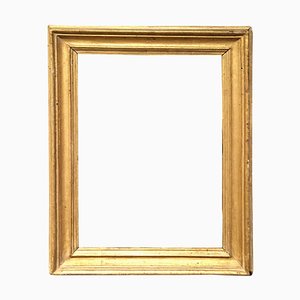
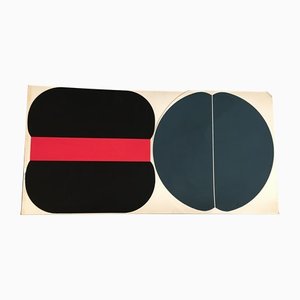
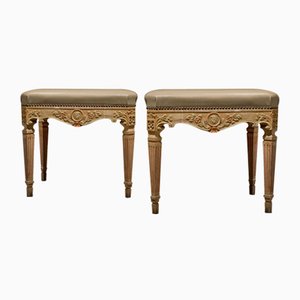
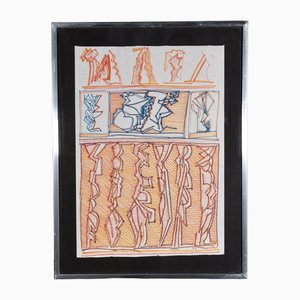
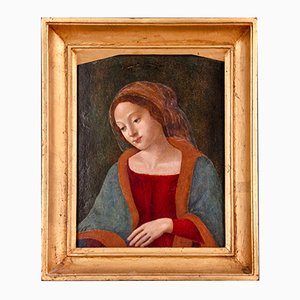

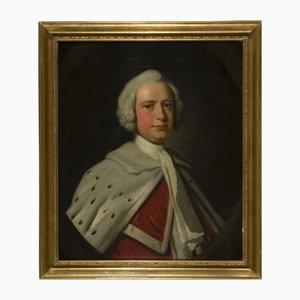



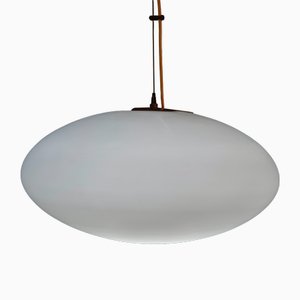
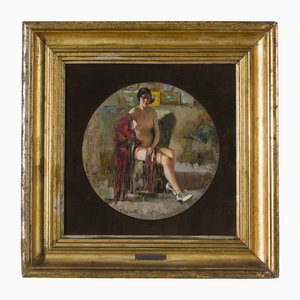
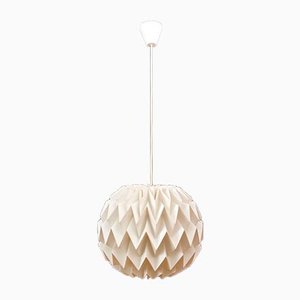
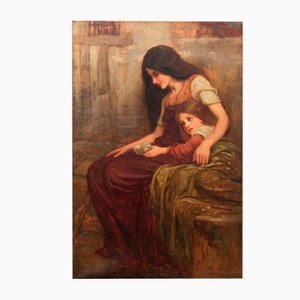
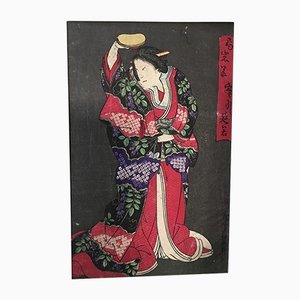
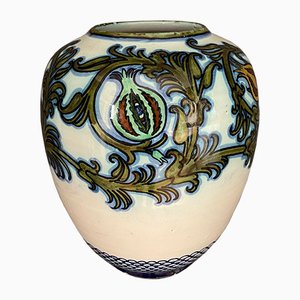
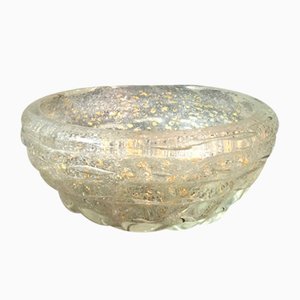
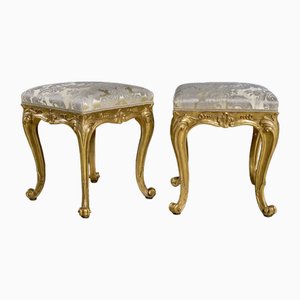
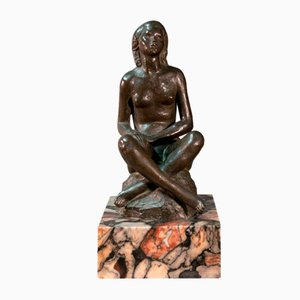
Contacta con nosotros
Haz una oferta
¡Hemos notado que eres nuevo en Pamono!
Por favor, acepta los Términos y condiciones y nuestra Política de privacidad
Contacta con nosotros
Haz una oferta
¡Ya casi está!
Para seguir la conversación en la plataforma, por favor completa el registro. Para proceder con tu oferta en la plataforma, por favor completa el registro.Exitoso
Gracias por tu consulta, alguien de nuestro equipo se pondrá en contacto contigo en breve.
Si eres profesional del diseño, por favor solicita aquí los beneficios del Programa comercial de Pamono